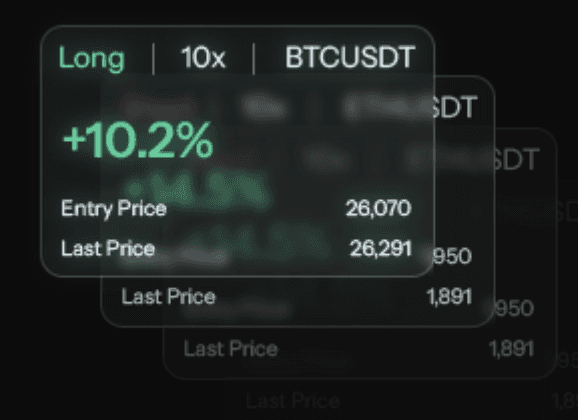Harnessing Volatility and Liquidity: A Guide for Crypto Day Traders
Jul 6, 2023
Volatility and liquidity are essential factors that significantly impact the success of day traders in the cryptocurrency market. In this comprehensive guide, we will delve deep into the significance of volatility and liquidity, providing detailed insights and practical strategies to help day traders identify and leverage potential trading opportunities. By understanding the drivers of volatility, monitoring price fluctuations, assessing market liquidity, and adapting to market conditions, traders can make informed decisions and thrive in the dynamic world of crypto day trading.
1. The Importance of Volatility in Day Trading:
Volatility plays a pivotal role in day trading as it creates opportunities for profit within short time frames. Cryptocurrencies, in particular, are known for their higher volatility compared to traditional financial markets. This is attributed to several factors, including:
- Limited market size: Cryptocurrency markets are relatively smaller than traditional markets, which makes them susceptible to more significant price fluctuations.
- Speculative trading: The speculative nature of cryptocurrencies attracts traders seeking quick gains, leading to increased price volatility.
- Regulatory developments: News and regulatory announcements can greatly impact the cryptocurrency market, resulting in sharp price movements.
- Technological advancements: Technological breakthroughs, updates, and security concerns surrounding cryptocurrencies can trigger substantial price swings.
Understanding and adapting to the inherent volatility of cryptocurrencies is crucial for day traders to develop effective strategies aligned with market conditions.
2. Monitoring Price Volatility:
Monitoring and measuring price volatility is vital for day traders to identify potential trading opportunities. Several techniques and tools can be utilized, including:
- Volatility indicators: Volatility indicators, such as the Average True Range (ATR) or the Volatility Index (VIX), help assess the magnitude of price movements and the level of volatility in the market.
- Bollinger Bands: Bollinger Bands consist of a moving average line and upper and lower bands that expand or contract based on market volatility. Traders use Bollinger Bands to identify periods of high or low volatility, indicating potential trading opportunities.
- Historical volatility: Historical volatility measures the past price fluctuations of an asset. By analyzing historical volatility, traders can gain insights into the potential range and speed of future price movements.
Understanding these indicators and measurements empowers day traders to evaluate market conditions and adjust their trading strategies accordingly.
3. Market Liquidity and Its Significance:
Market liquidity refers to the ease with which an asset can be bought or sold without significantly impacting its price. Liquidity is essential for day traders to execute trades swiftly and at desired prices. Several factors influence market liquidity in the cryptocurrency space, including:
- Trading volume: Higher trading volumes generally indicate increased liquidity, as there are more buyers and sellers in the market.
- Order book depth: The depth of the order book, which represents the outstanding buy and sell orders at different price levels, provides insights into market liquidity.
- Market depth: Market depth reveals the number of orders that exist beyond the best bid and ask prices. Higher market depth signifies increased liquidity.
Assessing liquidity indicators, such as volume profiles and bid-ask spreads, allows day traders to identify liquid trading pairs and avoid illiquid markets, reducing the risks of slippage and execution delays.
4. Market Sentiment and News Catalysts:
Market sentiment and news catalysts play a crucial role in driving volatility in the cryptocurrency market. Traders must stay attuned to market sentiment, which reflects the overall mood and perception of market participants. Positive or negative sentiment can trigger significant price movements.
News catalysts, such as regulatory announcements, partnerships, technological advancements, and major market events, can act as triggers for volatile price swings. Traders should actively monitor news sources, social media platforms, and cryptocurrency-specific websites to stay informed and react quickly to market-changing events.
By gauging market sentiment and staying informed about news catalysts, day traders can position themselves strategically and take advantage of volatile price movements.
5. Adapting to Overall Market Conditions:
Day traders need to adapt their strategies to align with prevailing market conditions. Analyzing market conditions involves:
- Trend analysis: Identifying the prevailing market trend, whether bullish, bearish, or ranging, helps traders align their strategies accordingly. Trend-following strategies work well during bullish periods, while range-bound strategies are more suitable for sideways markets.
- Chart patterns: Analyzing chart patterns, such as support and resistance levels, trendlines, and chart formations (e.g., triangles, flags, and wedges), assists in identifying potential entry and exit points.
- Key support and resistance levels: Identifying significant support and resistance levels helps traders anticipate price movements and adjust their trading strategies accordingly.
Adapting to overall market conditions allows day traders to capitalize on opportunities while managing risk effectively.
Conclusion:
Volatility and liquidity are crucial considerations for crypto day traders. By understanding the factors driving volatility, monitoring price fluctuations through indicators and measurements, assessing market liquidity, staying attuned to market sentiment and news catalysts, and adapting to overall market conditions, traders can enhance their decision-making process and seize potential trading opportunities.
Successful day trading in cryptocurrencies requires continuous monitoring, thorough analysis, and adaptability to the ever-changing market landscape. By effectively harnessing volatility and liquidity, day traders can navigate the challenges and capitalize on the opportunities presented by the dynamic world of cryptocurrencies. Remember to practice sound risk management, maintain discipline, and continually educate yourself to stay ahead in this exciting and fast-paced realm of crypto day trading.

Harnessing Volatility and Liquidity: A Guide for Crypto Day Traders
Jul 6, 2023
Volatility and liquidity are essential factors that significantly impact the success of day traders in the cryptocurrency market. In this comprehensive guide, we will delve deep into the significance of volatility and liquidity, providing detailed insights and practical strategies to help day traders identify and leverage potential trading opportunities. By understanding the drivers of volatility, monitoring price fluctuations, assessing market liquidity, and adapting to market conditions, traders can make informed decisions and thrive in the dynamic world of crypto day trading.
1. The Importance of Volatility in Day Trading:
Volatility plays a pivotal role in day trading as it creates opportunities for profit within short time frames. Cryptocurrencies, in particular, are known for their higher volatility compared to traditional financial markets. This is attributed to several factors, including:
- Limited market size: Cryptocurrency markets are relatively smaller than traditional markets, which makes them susceptible to more significant price fluctuations.
- Speculative trading: The speculative nature of cryptocurrencies attracts traders seeking quick gains, leading to increased price volatility.
- Regulatory developments: News and regulatory announcements can greatly impact the cryptocurrency market, resulting in sharp price movements.
- Technological advancements: Technological breakthroughs, updates, and security concerns surrounding cryptocurrencies can trigger substantial price swings.
Understanding and adapting to the inherent volatility of cryptocurrencies is crucial for day traders to develop effective strategies aligned with market conditions.
2. Monitoring Price Volatility:
Monitoring and measuring price volatility is vital for day traders to identify potential trading opportunities. Several techniques and tools can be utilized, including:
- Volatility indicators: Volatility indicators, such as the Average True Range (ATR) or the Volatility Index (VIX), help assess the magnitude of price movements and the level of volatility in the market.
- Bollinger Bands: Bollinger Bands consist of a moving average line and upper and lower bands that expand or contract based on market volatility. Traders use Bollinger Bands to identify periods of high or low volatility, indicating potential trading opportunities.
- Historical volatility: Historical volatility measures the past price fluctuations of an asset. By analyzing historical volatility, traders can gain insights into the potential range and speed of future price movements.
Understanding these indicators and measurements empowers day traders to evaluate market conditions and adjust their trading strategies accordingly.
3. Market Liquidity and Its Significance:
Market liquidity refers to the ease with which an asset can be bought or sold without significantly impacting its price. Liquidity is essential for day traders to execute trades swiftly and at desired prices. Several factors influence market liquidity in the cryptocurrency space, including:
- Trading volume: Higher trading volumes generally indicate increased liquidity, as there are more buyers and sellers in the market.
- Order book depth: The depth of the order book, which represents the outstanding buy and sell orders at different price levels, provides insights into market liquidity.
- Market depth: Market depth reveals the number of orders that exist beyond the best bid and ask prices. Higher market depth signifies increased liquidity.
Assessing liquidity indicators, such as volume profiles and bid-ask spreads, allows day traders to identify liquid trading pairs and avoid illiquid markets, reducing the risks of slippage and execution delays.
4. Market Sentiment and News Catalysts:
Market sentiment and news catalysts play a crucial role in driving volatility in the cryptocurrency market. Traders must stay attuned to market sentiment, which reflects the overall mood and perception of market participants. Positive or negative sentiment can trigger significant price movements.
News catalysts, such as regulatory announcements, partnerships, technological advancements, and major market events, can act as triggers for volatile price swings. Traders should actively monitor news sources, social media platforms, and cryptocurrency-specific websites to stay informed and react quickly to market-changing events.
By gauging market sentiment and staying informed about news catalysts, day traders can position themselves strategically and take advantage of volatile price movements.
5. Adapting to Overall Market Conditions:
Day traders need to adapt their strategies to align with prevailing market conditions. Analyzing market conditions involves:
- Trend analysis: Identifying the prevailing market trend, whether bullish, bearish, or ranging, helps traders align their strategies accordingly. Trend-following strategies work well during bullish periods, while range-bound strategies are more suitable for sideways markets.
- Chart patterns: Analyzing chart patterns, such as support and resistance levels, trendlines, and chart formations (e.g., triangles, flags, and wedges), assists in identifying potential entry and exit points.
- Key support and resistance levels: Identifying significant support and resistance levels helps traders anticipate price movements and adjust their trading strategies accordingly.
Adapting to overall market conditions allows day traders to capitalize on opportunities while managing risk effectively.
Conclusion:
Volatility and liquidity are crucial considerations for crypto day traders. By understanding the factors driving volatility, monitoring price fluctuations through indicators and measurements, assessing market liquidity, staying attuned to market sentiment and news catalysts, and adapting to overall market conditions, traders can enhance their decision-making process and seize potential trading opportunities.
Successful day trading in cryptocurrencies requires continuous monitoring, thorough analysis, and adaptability to the ever-changing market landscape. By effectively harnessing volatility and liquidity, day traders can navigate the challenges and capitalize on the opportunities presented by the dynamic world of cryptocurrencies. Remember to practice sound risk management, maintain discipline, and continually educate yourself to stay ahead in this exciting and fast-paced realm of crypto day trading.

Harnessing Volatility and Liquidity: A Guide for Crypto Day Traders
Jul 6, 2023
Volatility and liquidity are essential factors that significantly impact the success of day traders in the cryptocurrency market. In this comprehensive guide, we will delve deep into the significance of volatility and liquidity, providing detailed insights and practical strategies to help day traders identify and leverage potential trading opportunities. By understanding the drivers of volatility, monitoring price fluctuations, assessing market liquidity, and adapting to market conditions, traders can make informed decisions and thrive in the dynamic world of crypto day trading.
1. The Importance of Volatility in Day Trading:
Volatility plays a pivotal role in day trading as it creates opportunities for profit within short time frames. Cryptocurrencies, in particular, are known for their higher volatility compared to traditional financial markets. This is attributed to several factors, including:
- Limited market size: Cryptocurrency markets are relatively smaller than traditional markets, which makes them susceptible to more significant price fluctuations.
- Speculative trading: The speculative nature of cryptocurrencies attracts traders seeking quick gains, leading to increased price volatility.
- Regulatory developments: News and regulatory announcements can greatly impact the cryptocurrency market, resulting in sharp price movements.
- Technological advancements: Technological breakthroughs, updates, and security concerns surrounding cryptocurrencies can trigger substantial price swings.
Understanding and adapting to the inherent volatility of cryptocurrencies is crucial for day traders to develop effective strategies aligned with market conditions.
2. Monitoring Price Volatility:
Monitoring and measuring price volatility is vital for day traders to identify potential trading opportunities. Several techniques and tools can be utilized, including:
- Volatility indicators: Volatility indicators, such as the Average True Range (ATR) or the Volatility Index (VIX), help assess the magnitude of price movements and the level of volatility in the market.
- Bollinger Bands: Bollinger Bands consist of a moving average line and upper and lower bands that expand or contract based on market volatility. Traders use Bollinger Bands to identify periods of high or low volatility, indicating potential trading opportunities.
- Historical volatility: Historical volatility measures the past price fluctuations of an asset. By analyzing historical volatility, traders can gain insights into the potential range and speed of future price movements.
Understanding these indicators and measurements empowers day traders to evaluate market conditions and adjust their trading strategies accordingly.
3. Market Liquidity and Its Significance:
Market liquidity refers to the ease with which an asset can be bought or sold without significantly impacting its price. Liquidity is essential for day traders to execute trades swiftly and at desired prices. Several factors influence market liquidity in the cryptocurrency space, including:
- Trading volume: Higher trading volumes generally indicate increased liquidity, as there are more buyers and sellers in the market.
- Order book depth: The depth of the order book, which represents the outstanding buy and sell orders at different price levels, provides insights into market liquidity.
- Market depth: Market depth reveals the number of orders that exist beyond the best bid and ask prices. Higher market depth signifies increased liquidity.
Assessing liquidity indicators, such as volume profiles and bid-ask spreads, allows day traders to identify liquid trading pairs and avoid illiquid markets, reducing the risks of slippage and execution delays.
4. Market Sentiment and News Catalysts:
Market sentiment and news catalysts play a crucial role in driving volatility in the cryptocurrency market. Traders must stay attuned to market sentiment, which reflects the overall mood and perception of market participants. Positive or negative sentiment can trigger significant price movements.
News catalysts, such as regulatory announcements, partnerships, technological advancements, and major market events, can act as triggers for volatile price swings. Traders should actively monitor news sources, social media platforms, and cryptocurrency-specific websites to stay informed and react quickly to market-changing events.
By gauging market sentiment and staying informed about news catalysts, day traders can position themselves strategically and take advantage of volatile price movements.
5. Adapting to Overall Market Conditions:
Day traders need to adapt their strategies to align with prevailing market conditions. Analyzing market conditions involves:
- Trend analysis: Identifying the prevailing market trend, whether bullish, bearish, or ranging, helps traders align their strategies accordingly. Trend-following strategies work well during bullish periods, while range-bound strategies are more suitable for sideways markets.
- Chart patterns: Analyzing chart patterns, such as support and resistance levels, trendlines, and chart formations (e.g., triangles, flags, and wedges), assists in identifying potential entry and exit points.
- Key support and resistance levels: Identifying significant support and resistance levels helps traders anticipate price movements and adjust their trading strategies accordingly.
Adapting to overall market conditions allows day traders to capitalize on opportunities while managing risk effectively.
Conclusion:
Volatility and liquidity are crucial considerations for crypto day traders. By understanding the factors driving volatility, monitoring price fluctuations through indicators and measurements, assessing market liquidity, staying attuned to market sentiment and news catalysts, and adapting to overall market conditions, traders can enhance their decision-making process and seize potential trading opportunities.
Successful day trading in cryptocurrencies requires continuous monitoring, thorough analysis, and adaptability to the ever-changing market landscape. By effectively harnessing volatility and liquidity, day traders can navigate the challenges and capitalize on the opportunities presented by the dynamic world of cryptocurrencies. Remember to practice sound risk management, maintain discipline, and continually educate yourself to stay ahead in this exciting and fast-paced realm of crypto day trading.

Supercharge your trading game with Market Mapper today!




